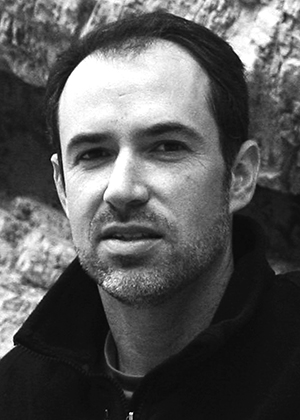Citation

Douglas Fox has spent much of the past 11 years writing about ice: how microscopic dust grains spawn high-altitude ice crystals that lead to rain, how the ice crystals that compose the rings of Saturn led scientists to discover a potential habitat for life deep inside one of Saturn’s moons, and the surprising role that ice may have played as a cradle for the origin of life on Earth 4 billion years ago.
But it was pure serendipity that piqued Doug’s interest in ice’s elemental opposite. While researching a story on climate change in 2015, he happened to speak with a wildfire scientist who told him how little we actually know about the inner workings of a flame.
Whether a single burning match or a roaring forest inferno, a fire’s essence is its rising column of hot, buoyant gases. The smoke plume that billows thousands of feet above a wildfire drives its intake of fresh oxygen and, ultimately, its dangerous behavior on the ground. Doug loved the idea of writing about the ephemeral and unexplored heart of a wildfire, in a story about nothing more than hot air. The topic may seem small and mundane from the outside yet turns out to be vast and expansive on the inside. Doug spent over a year working on his feature story “Firestorm” (High Country News, 3 April 2017), which won the Walter Sullivan Award.
His story traces the unlikely roots of our knowledge on extreme fire behavior, from the incendiary bombing raids of World War II to studies that were performed during the Cold War to predict the impact of nuclear explosions on American suburban neighborhoods. The story reveals the surprisingly destructive power of seemingly trivial forces: the condensation of water vapor exhaled from combustion, a physiologic trait shared by both humans and wildfires. Most important, his story illuminates an archetypal theme in science: how an invisible force, be it magnetism, radiation, or pathogenic microbes, finally became visible to humans for the first time. This story, in other words, helps us see the world in a brand-new light: the light of a burning flame.
—Brian Calvert, High Country News, Paonia, Colo.
Response
It’s a tremendous honor to earn the Walter Sullivan Award, and I want to thank AGU for supporting journalism.
I am especially happy to see the honor go to this particular story (“Firestorm”) because of the recognition that it brings to a number of other people who greatly deserve it.
High Country News, which published the story, has shown such a commitment to the accurate and nuanced telling of complicated stories—a commitment to storytelling not just as a service to the public but also as an art form. No story can live up to its full potential without a proper investment in time, money, space on the page, and the meticulous attention of editors, and Brian Calvert, the magazine’s editor in chief, has seen to it that High Country News accomplishes this again and again.
I am especially grateful to Sarah Gilman, who was my editor on this story and who was a joy to work with, for so many reasons. She was unfailingly excited about this story—seemingly every bit as excited as I was—from the moment that I first approached her with the idea, in September 2015, to the day that it was finally published, in April 2017. She has a deep interest in storytelling—a true talent for it and a perceptive eye—and as she and I partnered on revising this piece, she constantly challenged me to think clearly about the grand arc of the story, the analogies and metaphors that would shape the reader’s understanding, the rhythm of scenes and explanation, and the precise placement of images and details, from the biggest mushroom cloud to the tiniest flicker of a flame. Not every story lives up to its full potential—but I believe that this one did—and I give her equal credit for making that happen. It was hard work but enjoyable and rewarding. Thank you so much, Sarah!
—Douglas Fox, High Country News
Citation:
(2019), Fox receives 2018 Walter Sullivan Award for Excellence in Science Journalism–Features, Eos, 100, https://doi.org/10.1029/2019EO114239. Published on 23 January 2019.
Text © 2019. AGU. CC BY-NC-ND 3.0
Except where otherwise noted, images are subject to copyright. Any reuse without express permission from the copyright owner is prohibited.
